Succulents are precious to their owners and a nightmare when they are infected by fungus; here’s a guide on how to get rid of fungus during summer in Asia.
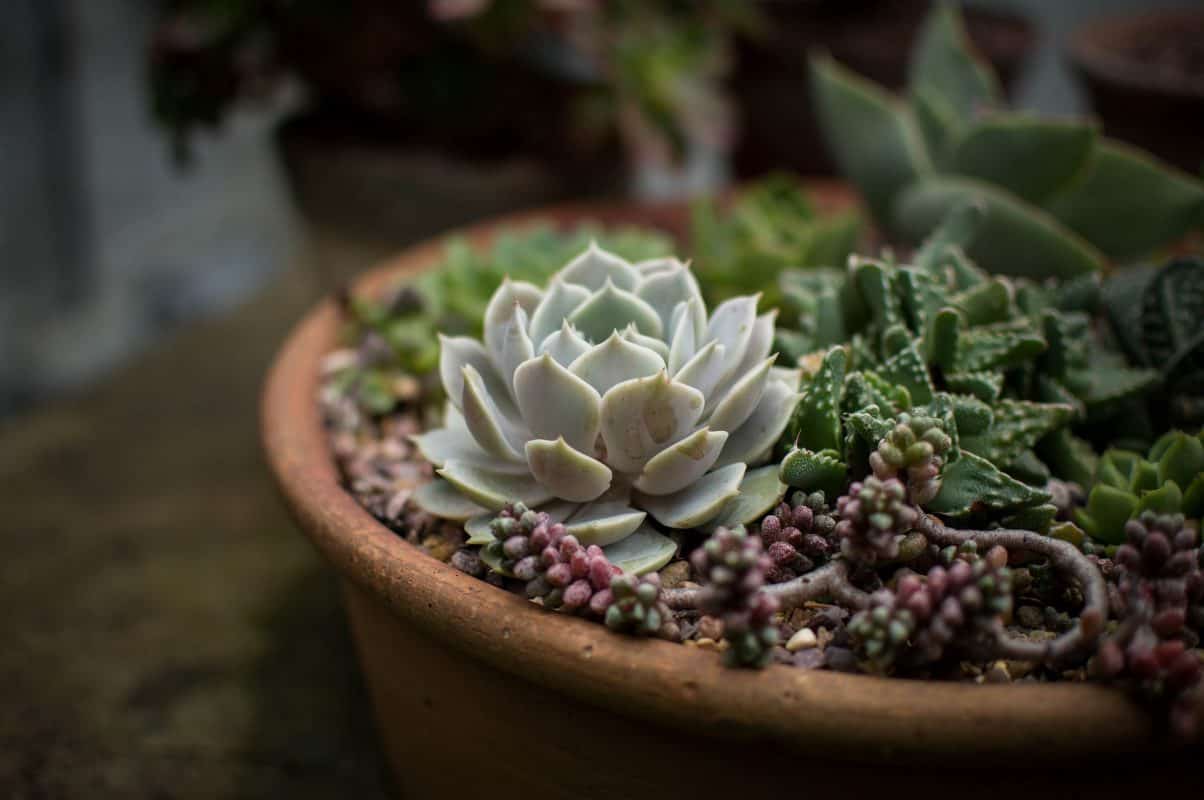
Succulents are the perfect addition to any room that has direct sunlight; they are low maintenance and are the best companions for anyone who is looking for an easy maintenance plant. Succulents come in all shapes, sizes, and colors, so one can always choose a succulent according to your preference.
They are best for today’s busy life as most people are caught up with work and cannot take care of a plant that requires high maintenance. However, plenty of time, due to various weather conditions or other reasons, the succulent may get fungus.
Succulents can have problems when there is a change in the environment. Summer in Asia can be very harsh as the region is not mainly known for the cold weather. The change of weather can cause issues like fungus, which is beyond frustrating for any succulent owner.
A fungus problem can eat succulents in a blink of an eye, and therefore fungus on succulents can be the owner’s worst nightmare, as they can be very annoying to remove depending on the type of fungus and also your precious plant’s life is on the line.
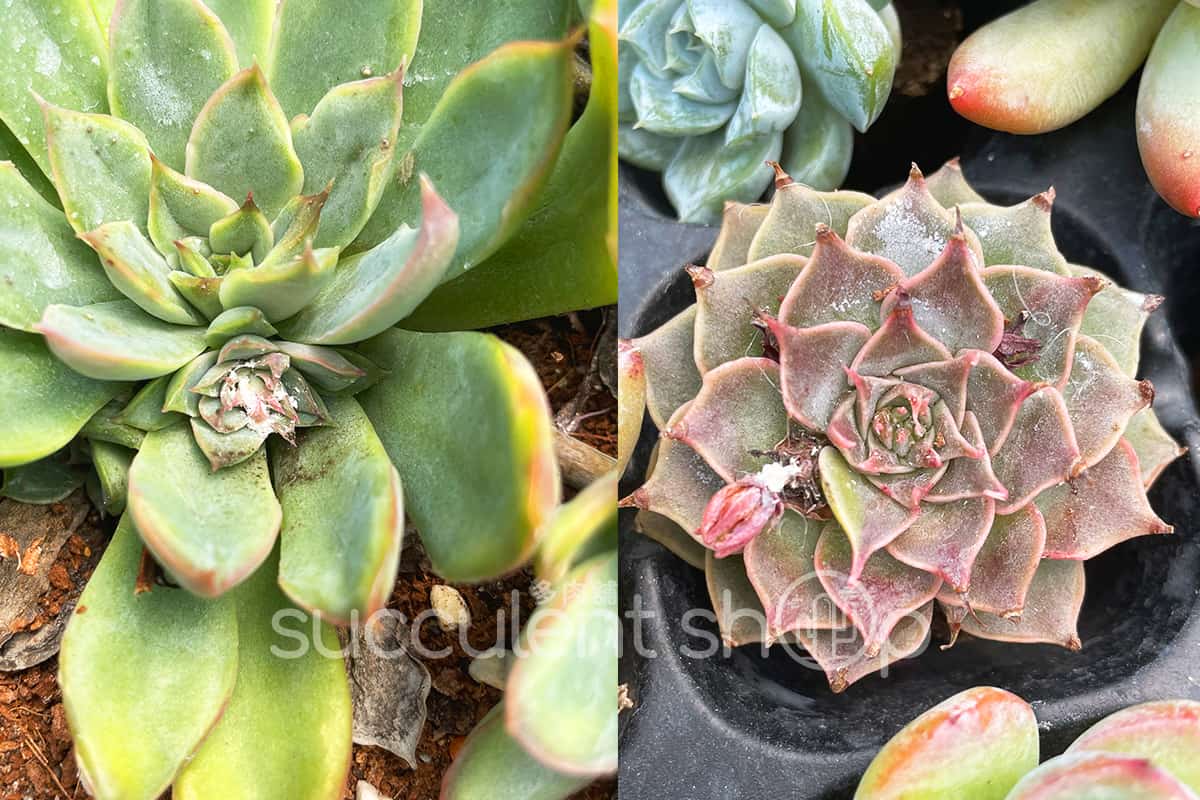
Powdery Mildew & what to do
If you see a succulent and notice that it has a dusted appearance, almost as if there was a grey or white powdery coating on top, then it is a clear indication that it is infected by a fungus. This fungus starts off in a circular pattern, and you will potentially start seeing white dots on the leaves, and when this infection gets worse, that’s when the spots will start turning yellow-brown and then black. In most cases, Powdery Mildew will go away on its own, but the best way to get rid of it is using a plant fungicide. A plant fungicide is most effective for this as it doesn’t ruin the soil of the plant and gets rid of the Powdery Mildew issue as well.
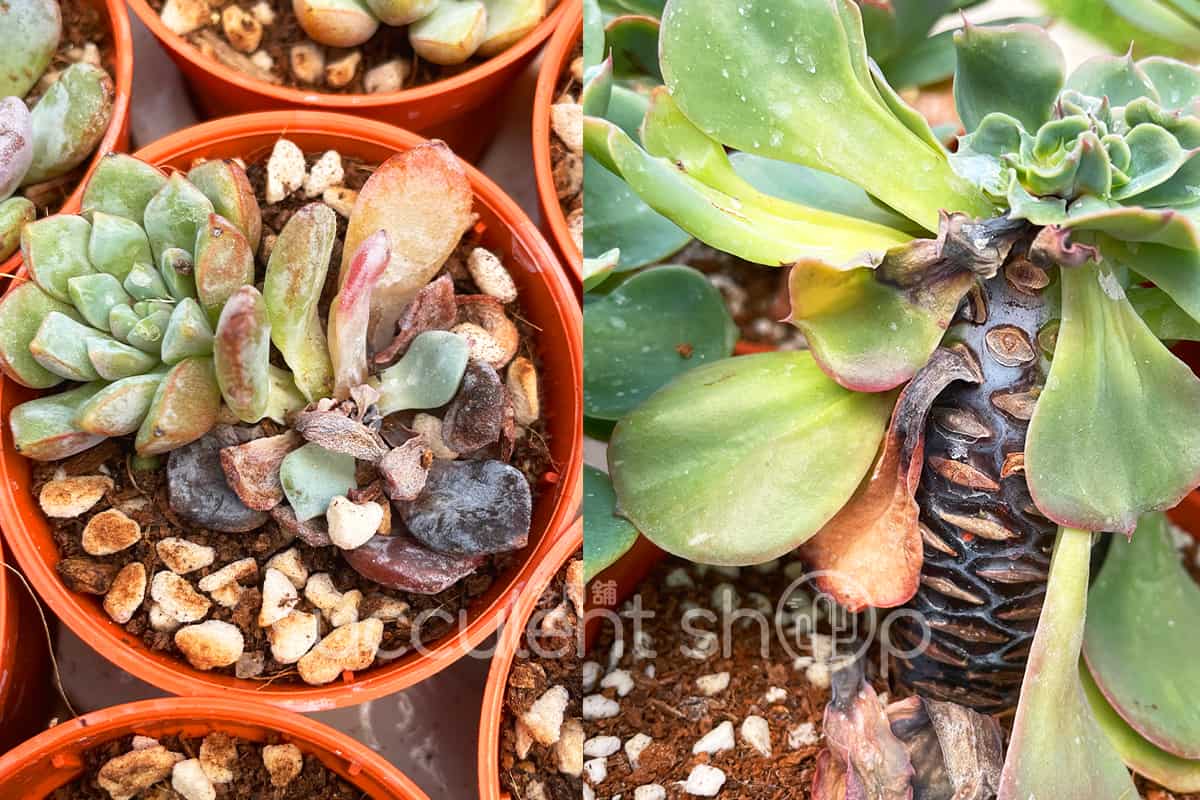
Sooty Mold (also known as Black Mold) & what to do
Sooty Mold or Black Mold is one of the least damaging fungi out there. The infection usually means that the overall plant is now affected by mealybugs, aphids, sap-sucking pests, and whiteflies in the plant. These insects are known to exuding a sweet substance, which is called honeydew, and the Sooty Mold feeds on that.
The best way to know that your succulent is affected by black Mold is to see the signs of black or dark brown fungal growth on the outside part of the plant, particularly the outside leaves. The best way to get rid of this is to spray the affected leaves of the plant with an insecticide. Insecticides are easily available and are the best solution for getting rid of Sooty Mold. Insecticides do not harm the plant and bring life back to your succulent.
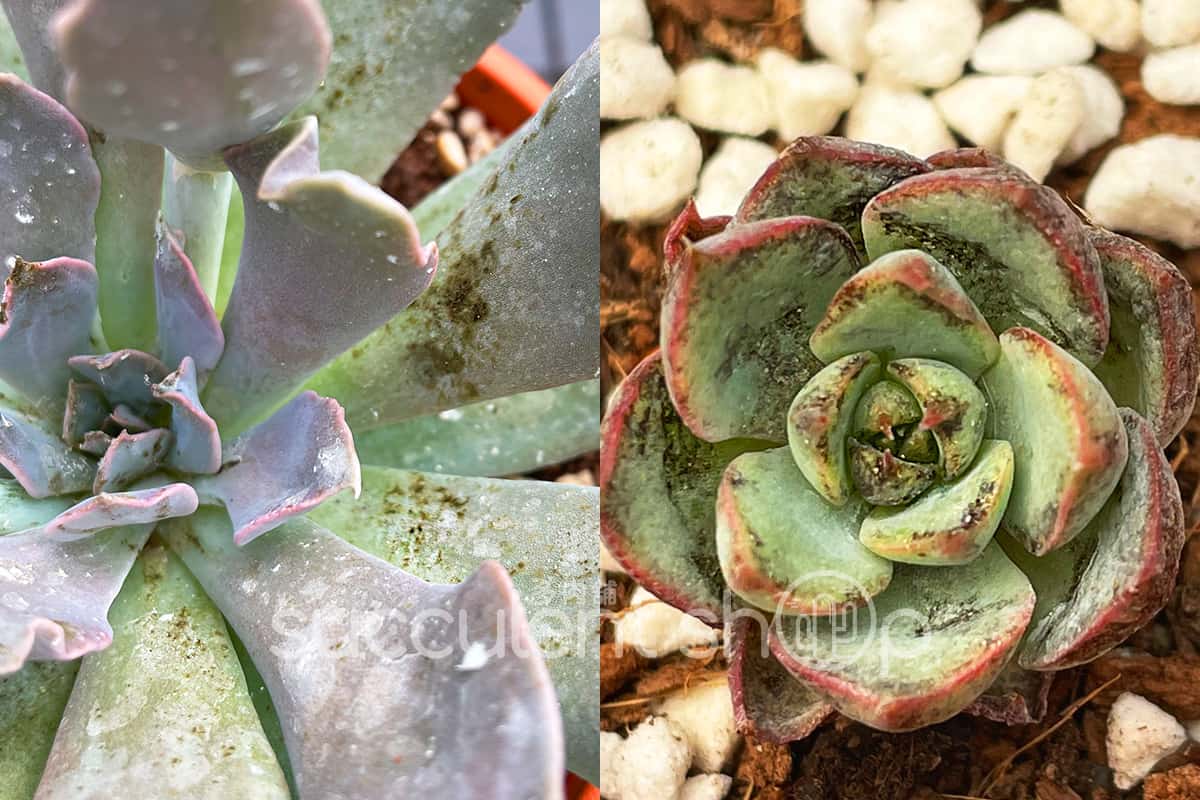
Grey Mold (also known as Botrytis Cinerea) and what to do
It is quite easy to detect this fungus in its early stages as it starts leaving circular grey-brown spots on the surface of the succulent leaves and stems. You will notice that these spots will become fuzzier as the fungus spreads and grows. This kind of fungus is most likely to spread when the weather conditions are moist, and there is very poor airflow in the room. The condition also worsens when the temperature is cool and wet, which is usually the case in early summer in Asia. The best way to get rid of Grey Mold is to use dishwashing soap on the infected areas. The dishwashing soap must be free of greasers and bleach. In the case that the infection is serious, then the best suggestion is to cut the infected areas and not water the plant from the top.
Recommendation:
-
 PlantFood Maintenance 100% Organic FertiliserRM19.90
PlantFood Maintenance 100% Organic FertiliserRM19.90 -
 PlantFood Fruits 100% Organic FertiliserRM19.90
PlantFood Fruits 100% Organic FertiliserRM19.90 -
 PlantFood Leaf 100% Organic FertiliserRM19.90
PlantFood Leaf 100% Organic FertiliserRM19.90 -
 PlantFood Trunk & Roots 100% Organic FertiliserRM19.90
PlantFood Trunk & Roots 100% Organic FertiliserRM19.90 -
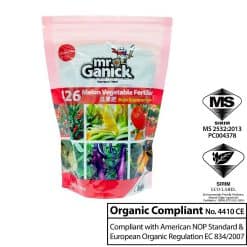 Mr Ganick 426 Organic Melon Vegetable FertilizerRM6.30
Mr Ganick 426 Organic Melon Vegetable FertilizerRM6.30 -
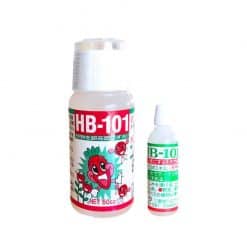 HB-101RM60.00
HB-101RM60.00 -
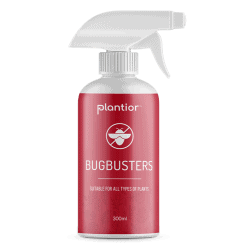 BugbustersRM11.00 – RM68.00
BugbustersRM11.00 – RM68.00 -
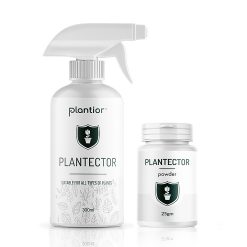 PlantectorRM6.00 – RM11.00
PlantectorRM6.00 – RM11.00
